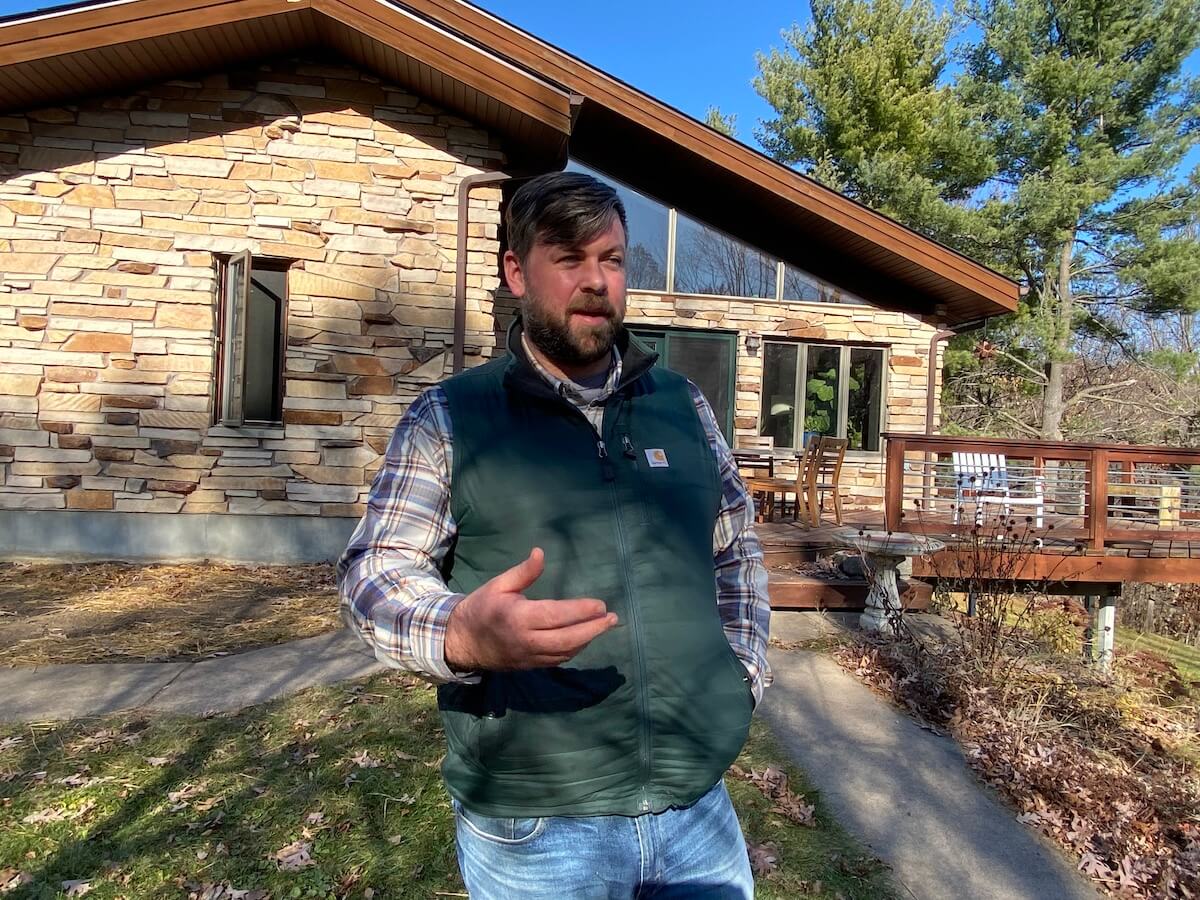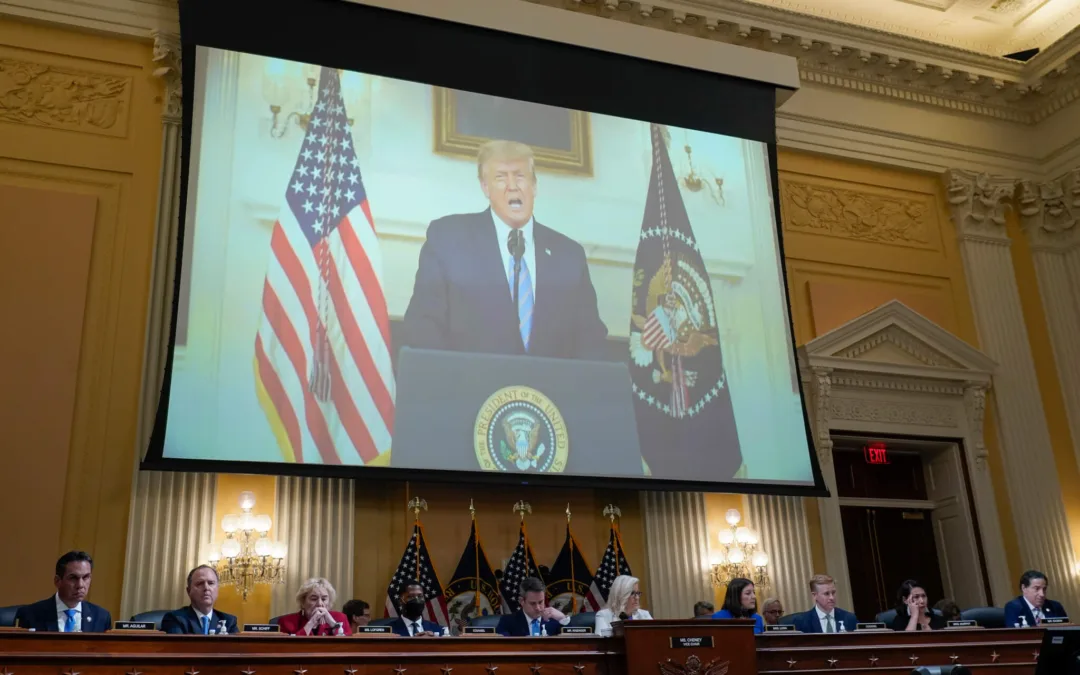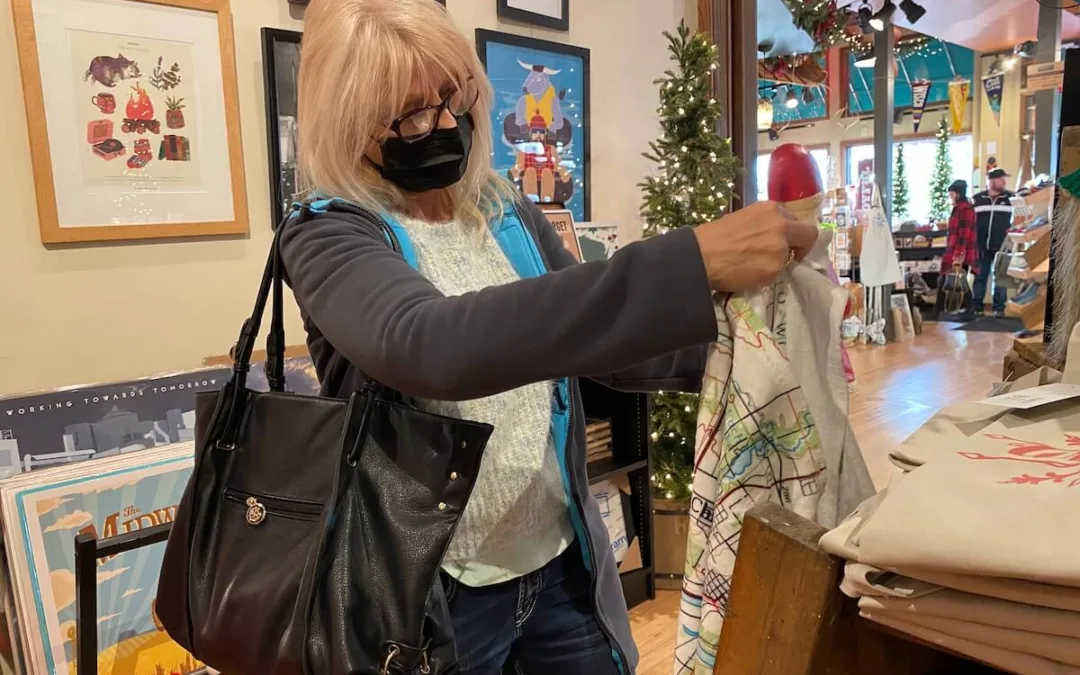
#image_title
#image_title
Of the 60 Wisconsin counties that supported Trump in 2016, 58 voted for him again, 33 by a higher percentage.
As Bill Hogseth watched the 2016 presidential election playing out in favor of Donald Trump, he experienced a growing mix of discomfort and disbelief.
As the results continued toward Trump’s election as president, a frustrated Hogseth turned off his TV and went to lie in bed next to his 5-year-old son Franklin. Hogseth was flooded with negative thoughts about the ramifications of a Trump presidency.
“My mind was just racing,” Hogseth recalled of that night four years ago. “I was envisioning all of this bad stuff happening, how it was going to mean a worse future for so many people, including my son.”
Trump’s election served as a wake-up call for Hogseth. The resident of rural Dunn County who hadn’t been politically active previously decided to get involved.
He formed the group Indivisible Chippewa Valley, a grassroots organization that sought to engage citizens to push back against the Trump agenda. He started Chippewa Valley Votes, a voter registration and education effort. He became chairman of the Dunn County Democratic Party, leading efforts in a so-called “pivot county” where voters had supported Democrat Barack Obama in 2008 and 2012 but switched to back Trump, a Republican, in 2016.
Joe Biden won the state of Wisconsin, but not the rural areas Hogsesth is working to sway.
Despite countless meetings, phone calls and other organizing, Dunn County voters backed Trump and Republican candidates for state Assembly in Tuesday’s election. In fact, residents there voted more strongly Republican than they did in 2016, with 56% supporting Trump this year compared to 52% four years ago.
That trend occurred in many other rural Wisconsin counties, election figures show. A review of Tuesday’s county voting totals in Wisconsin shows of the 60 counties that supported Trump in the 2016 election, only two—Sauk and Door counties—voted for Democratic presidential candidate Joe Biden on Tuesday. Thirty-three of the 60, including Dunn County, supported Trump by a bigger margin than in the presidential election four years ago.
When he was elected president in 2016, Trump prompted significant voter gains in Wisconsin’s rural locations, with 30 counties recording Republican voting gains of 20% or more. He maintained those margins in Tuesday’s election and improved his margin in all but three counties, although most of those increases were relatively small.
The increase in Republican votes cast was significant in Juneau County. That county favored Obama by 7 points in 2012 but shifted to plus-26 for Trump four years later. Tuesday’s election results show Trump carried the county by a 64% to 35% margin, or 29 points. Similarly, Trump won Washington County by nearly 40% both years.
Conversely, Biden attracted more support from Democrats than Hillary Clinton did in 2016 in the state’s urban and suburban locations, most notably in Dane County and suburban sites around Milwaukee. Absentee votes cast in Green Bay, Milwaukee, and Kenosha that were reported after other vote totals turned a Trump lead in Wisconsin late Tuesday into a narrow victory for Biden.
From 2016 to 2020, the number of votes cast by Democrats increased most in the state’s more-populous locations. Democrats cast 34,946 more votes in Dane County; 20,143 more in Milwaukee County; 7,553 more in Waukesha County; 3,472 more in Brown County; and 3,128 in La Crosse County.
Those results are evidence of what political analysts say are increasingly divided political ideologies of voters in rural and urban areas in Wisconsin and elsewhere across the country. Votes that used to be more mixed in a particular county or region are most often now starkly different between people living in cities and the surrounding countryside.
“It’s like we’re living in two different worlds,” Hogseth said Thursday from his Dunn County home in the wooded hills 20 miles west of Eau Claire. “The people in the rural and urban parts of this state obviously have very different views.”
Growing Divide
Political viewpoints of rural and urban parts of Wisconsin and the country have been growing more divergent for decades, political analysts said. But those contradictory stances have become starkly different during the past decade.
“This trend has been happening for a long time,” Geoff Peterson, chairman of the UW-Eau Claire political science department, said of the growing urban-rural divide. “But we are seeing it accelerate. More and more here in Wisconsin and across the country, we’re seeing people in rural areas vote for Republicans in large numbers and those in urban and suburban locations doing the same for Democrats.”
At least part of the reason for the furthering of that phenomenon is Trump, Peterson said. When Trump ran in 2016, he sought to divide rural and urban areas, directly appealing to the working-class people who make up most rural regions. Trump used that strategy again in 2020, Peterson said.
“The divide is accelerating because [Trump] is actively trying to take advantage of that gap for electoral purposes,” Peterson said.
That approach helped Trump get elected, Peterson said, as the president appealed to voters who previously felt left out of political discussions. But it isn’t one that seems likely to work long-term, given that rural areas are losing people to urban sites.
“From a math standpoint, there are very real limits to that strategy,” Peterson said. “For Republicans to win a statewide or national election, they have to appeal to enough suburban or urban voters in addition to those they get in the country.”

‘We Want to Tell our Story’
When asked why farmers and others who call rural Wisconsin home support Trump and other Republican candidates in larger numbers, Joe Bragger has a simple answer.
“Just the presidential visits to our state for this campaign, see how many there were,” Bragger, a Buffalo County farmer who is president of Wisconsin Farm Bureau Federation, said in reference to Trump campaigning more in Wisconsin in recent weeks than Biden. “And look at how many times the candidates contact farmers and ask if they can come visit them, come spend time on our farms. There is one party that does that more than the other.”
Those calls and stops at farms might not lead to policy changes that benefit farmers directly, Bragger said. But they send a message to farmers and others in rural locations that their voice matters.
“We want to tell our story. We want to be heard,” Bragger said, noting many rural residents don’t feel the government is listening to their concerns. “Our rural areas are hurting. We need help. And we want to know that someone is listening to us.”
People living in rural Wisconsin also tend to favor Republicans because they tend to possess independent streaks, he said. That stance often leads farmers and others in rural areas to support Republican political candidates, who typically support fewer government regulations.
“Out here, we don’t want any more rules,” Bragger said Thursday during a break from work on his 1,300-acre farm in the rolling hills of Buffalo County. “We want to be left to ourselves. We want to work hard and make it as best we can.”
As a former UW-Extension office employee who worked on poverty-related issues across northern Wisconsin, Julie Keown-Bowmar is familiar with the growing urban-rural divide. In addition to that job, Keown-Bowmar, now executive director of Wisconsin Farmers Union, has lived in rural locations in Dunn and Chippewa counties.
She has seen the frustration of farmers and others who call the country home firsthand.
“People in rural communities are literally watching their towns go away,” she said. “They’re losing a farm that has been in their family for generations. In many cases they’re feeling forgotten, left out.”
Seeking Common Ground
Keown-Bomar acknowledged the political differences between people living in cities and in the countryside, saying those contrasts “have been stoked for political gain.” But she said she believes those sides can come together to address issues such as health care and higher wages that impact people wherever they live.
The Wisconsin Farmers Unionis working this year to find issues that could form the basis of a common ground approach to bring people together, she said. In addition to health care and wages, fair maps is another topic that people in cities and the country tend to support, she said.
“It is true that there are different approaches to addressing issues that are different between rural areas and urban ones,” Keown-Bomar said. “But there are issues that are common between those groups too.”
Despite growing political differences, Bragger said he also believes his rural colleagues and those living in cities and suburbs can coalesce on certain issues. Broadband and roads are two issues that impact rural and urban residents, he said, and people from both groups must come together to push politicians to address those needs.
“In my business of farming, we’d better build partnerships with anyone we can,” Bragger said. “When we get involved with others, and bring together all of those different skills and set aside our differences, we can come up with much better solutions for all of us.”
Despite Dunn County remaining a red county in Tuesday’s election, Hogseth said he feels good about the work he and his fellow county Democrats did to discuss issues of importance to the people who live in the place he calls home. He knows all too well that many of his neighbors ardently support Trump and other Republicans. He hears their enthusiasm in conversations, sees the many Trump signs lining the roads near his home.
But he remains hopeful that Democrats and Republicans, rural residents and those who live in cities, can find enough common ground to move forward to address issues common to all.
“We have to have those discussions,” he said. “We have to find ways to come together. That is how we can make progress.”
Politics

Biden administration bans noncompete clauses for workers
The Federal Trade Commission (FTC) voted on Tuesday to ban noncompete agreements—those pesky clauses that employers often force their workers to...

Opinion: Trump, GOP fail January 6 truth test
In this op-ed, Milwaukee resident Terry Hansen reflects on the events that took place on January 6, the response from Trump and other GOP members,...
Local News

Readers Poll: Top Bowling Alleys in Wisconsin
Looking for the best bowling in Wisconsin? Look no further! Our readers have spoken in our recent poll, and we have the inside scoop on the top...

8 Wisconsin restaurants Top Chef judges are raving about
Top Chef’s 21st season is all about Wisconsin, and on-screen, it’s already apparent that the judges feel right at home here. But, while filming in...


